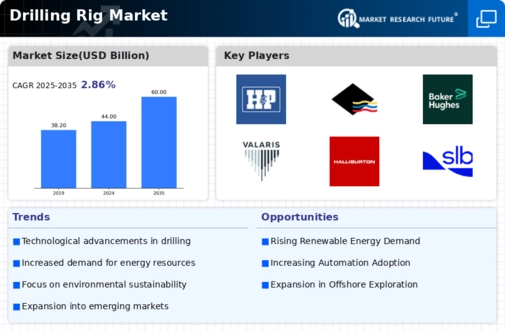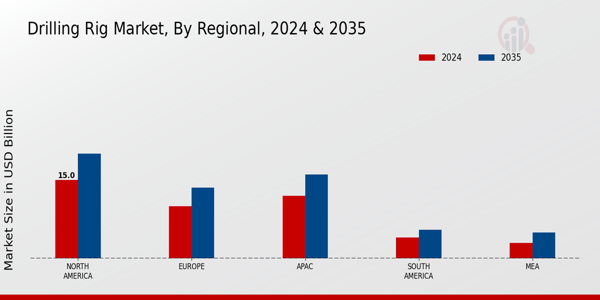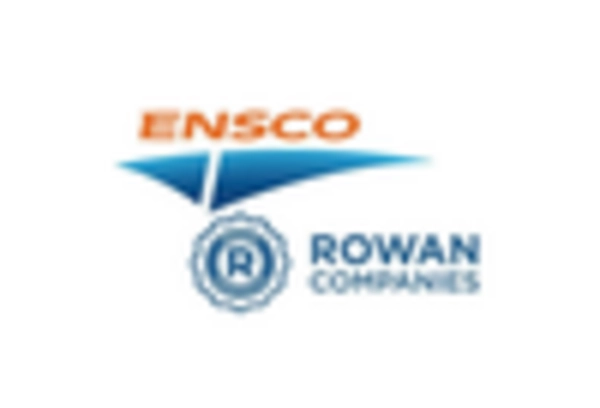Geopolitical Factors
Geopolitical dynamics have a profound impact on the Drilling Rig Market. Political stability, trade agreements, and international relations can influence the accessibility of oil and gas reserves. Regions experiencing political unrest may see a decline in drilling activities due to heightened risks and uncertainties. Conversely, stable regions with favorable policies may attract foreign investments, boosting drilling operations. For instance, countries that foster a conducive environment for energy exploration are likely to see an influx of drilling rigs and associated technologies. Thus, geopolitical factors remain a critical driver, shaping the operational landscape of the Drilling Rig Market.
Regulatory Frameworks
The regulatory landscape surrounding the energy sector significantly influences the Drilling Rig Market. Governments are increasingly implementing stringent regulations aimed at environmental protection and sustainable resource management. These regulations often require drilling companies to adopt best practices and invest in cleaner technologies. For example, regulations mandating reduced emissions and waste management practices are compelling operators to upgrade their drilling rigs. This shift not only enhances operational compliance but also opens avenues for innovation within the industry. As a result, the Drilling Rig Market is likely to see a transformation in operational standards, leading to more environmentally friendly practices.
Increased Energy Demand
The Drilling Rig Market is experiencing a surge in demand for energy resources, driven by the growing global population and industrialization. As economies expand, the need for oil and gas continues to rise, prompting exploration and production activities. According to recent data, energy consumption is projected to increase by approximately 30 percent by 2040, necessitating the deployment of advanced drilling rigs to meet this demand. This trend is particularly evident in regions with untapped reserves, where drilling operations are becoming more frequent. Consequently, the Drilling Rig Market is likely to see a significant uptick in investments and innovations aimed at enhancing drilling efficiency and reducing operational costs.
Technological Innovations
Technological advancements play a pivotal role in shaping the Drilling Rig Market. Innovations such as automated drilling systems, real-time data analytics, and advanced materials are enhancing drilling efficiency and safety. For instance, the integration of artificial intelligence and machine learning in drilling operations is streamlining processes and minimizing human error. Furthermore, the market is witnessing the adoption of hybrid rigs that combine traditional and renewable energy sources, thereby reducing carbon footprints. As these technologies evolve, they are expected to drive down costs and improve the overall performance of drilling rigs, making them more attractive to operators and investors alike.
Investment in Renewable Energy
The Drilling Rig Market is also being shaped by the growing investment in renewable energy sources. As countries strive to diversify their energy portfolios, there is an increasing focus on integrating renewable energy with traditional fossil fuel extraction. This trend is prompting drilling companies to explore hybrid models that utilize both conventional drilling techniques and renewable energy technologies. The investment in offshore wind farms and geothermal energy projects is particularly noteworthy, as these initiatives require specialized drilling rigs. Consequently, the Drilling Rig Market is adapting to these changes, potentially leading to new business opportunities and market segments.


















Leave a Comment